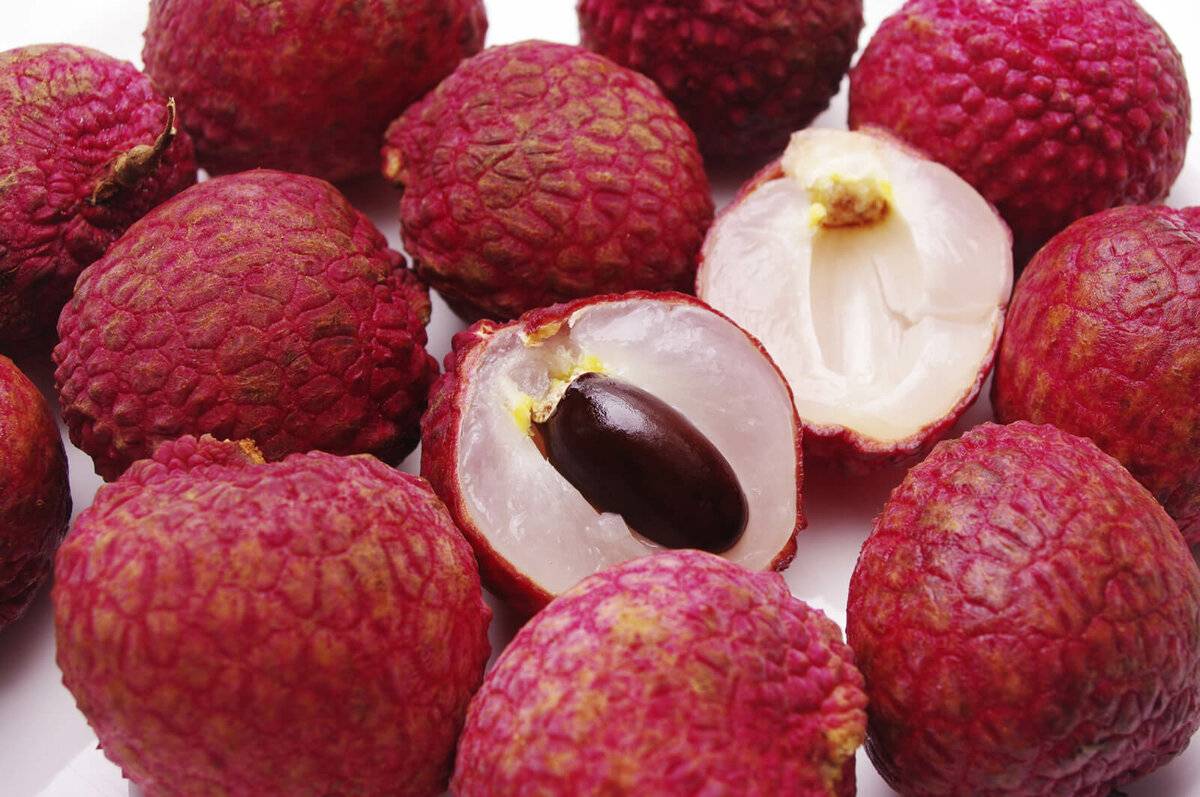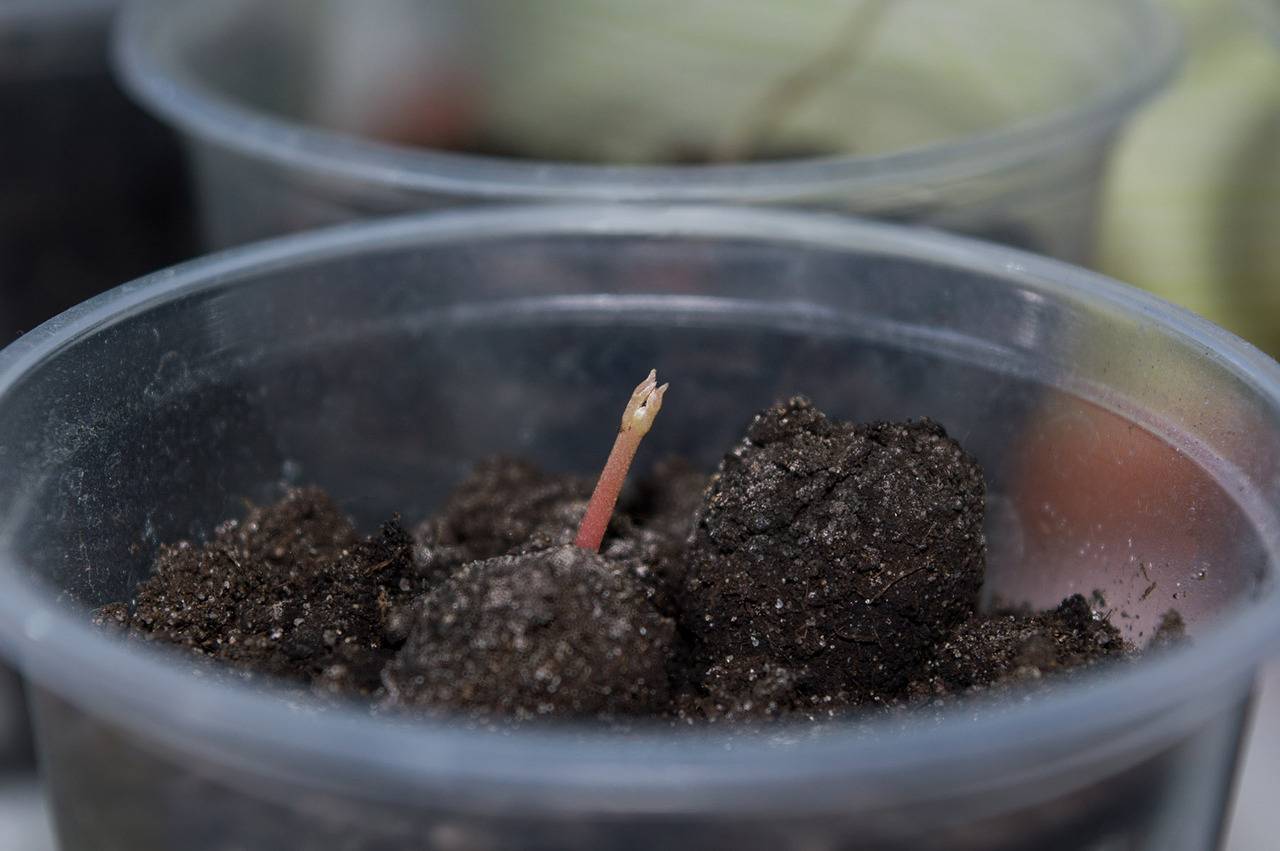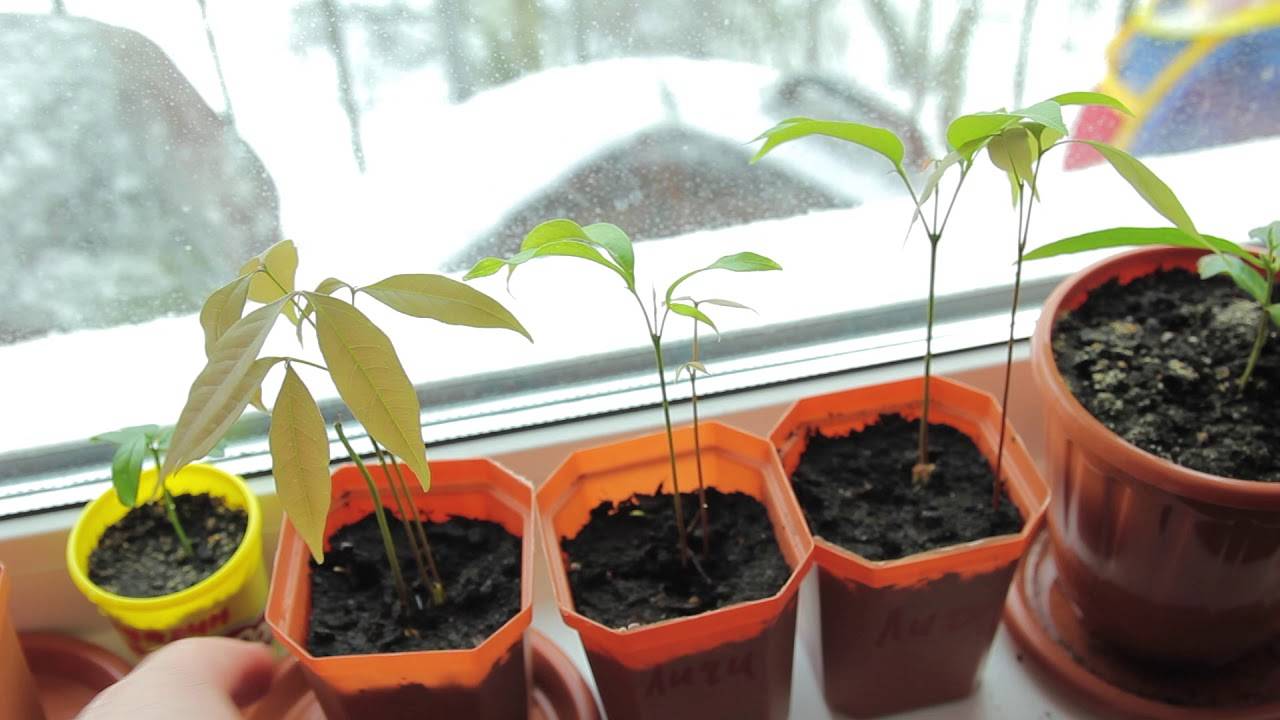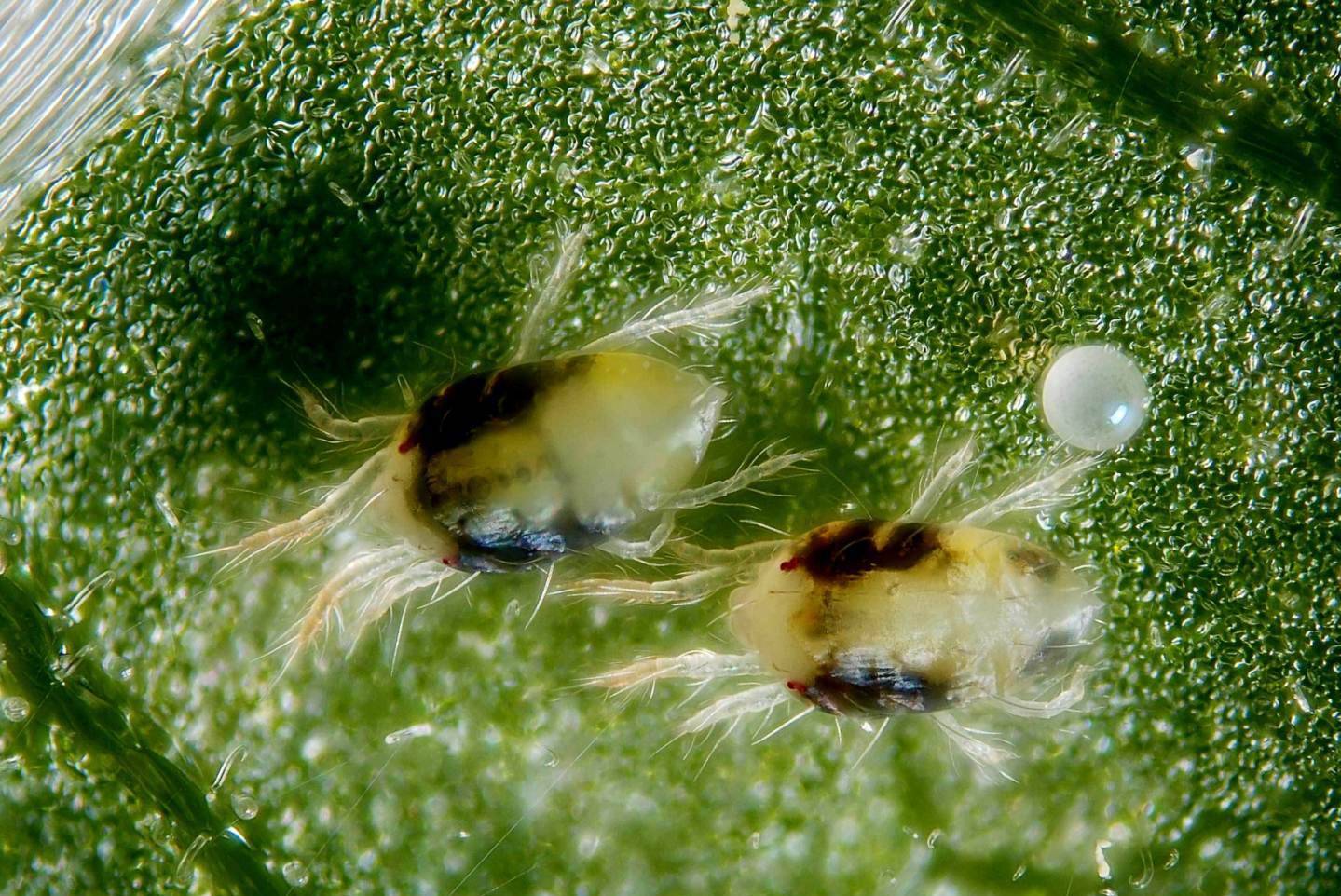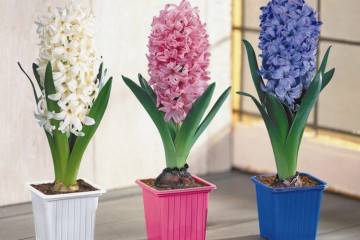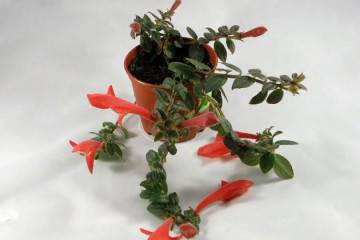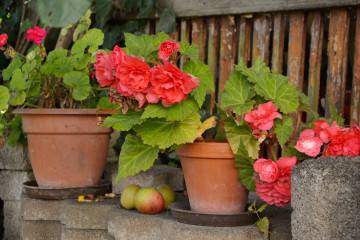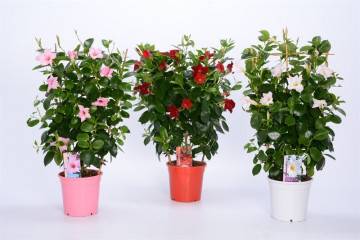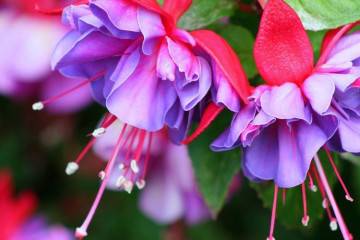Lychee from the bone at home - growing and care
Content:
Lychee is a rare but delicious fruit native to the tropical regions of Southeast Asia. Recently, he began to appear frequently on the shelves of Russian stores. If after the purchase you liked its taste, then later, in order not to spend money, you can try to grow it at home. It is not difficult to figure out how to grow lychees.
Description of lychee: the benefits and harms of berries
Lychee belongs to the Sapindov family of the genus litchi. It is distinguished by rather small fruits, which can grow up to 3.5 cm in diameter and weigh no more than 20 g. Fruits are round or oval in shape, outside they are covered with a dense, brittle and rough skin of a pink or red hue. Inside there is a juicy flesh of a pale color. It has an unusual slightly sour taste and pleasant smell. In the middle of the fruit is a dark brown, inedible seed.
The tree on which the fruits grow in bunches grows up to 30 m in height and has a dense crown. Its leaves are dense and leathery and tend to be dark green in color.
Lychee fruits contain many vitamins, trace elements and fiber, making them a very useful product. With their regular use, a person receives a lot of nutrients, and also feels a surge of vigor and strength. The fruits have a tonic effect and have a positive effect on the immune system.
With regard to harm to human health, it is believed that lychee does not have a negative effect. In some cases, it can cause an allergic reaction, so the first time you need to try a small amount of the fruit. In addition, Chinese plum is contraindicated for people with individual intolerance to this product.
How to grow lychee fruit from seed at home
Growing a lychee tree from a bone is a rather laborious process. In order for everything to work out correctly, you must consider the following points:
- planting the plant should be carried out in a room with a temperature of 28-30 ° C and an air humidity of 70-80%;
- provide adequate lighting;
- watering to produce moderate, spray the leaves with settled water;
- do not forget to feed the lychees with mineral fertilizers in time;
- choose the right container and soil before planting the plant;
- replant in a timely manner.
How to choose a bone
In order for the future tree to grow healthy, you should choose the right planting material. A fruit with a stalk with a bright red skin is best.
How to prepare and germinate a seed
To grow lychees at home from a bone, you need to buy a fresh ripe fruit, remove the bone from it and clean it from the pulp. After that, in order for it to sprout, you need to do the following:
- Wrap the bone in natural fabric and moisturize.
- Always make sure that the material remains wet at all times.
- After about 7 days, the seed will begin to sprout. After that, you can transplant it into the ground.
Soil preparation
It is quite difficult to choose the right composition of the substrate for lychee, so it is better to purchase a special mixture for exotic plants in the store. At the same time, it is important to know the main requirements for the soil:
- it must have sufficient acidity;
- have the correct chemical and mineral composition;
- have good air and water permeability;
- the package with the soil must have a quality certificate;
- it is advisable to use a substrate produced by reliable and proven firms.
Landing rules
Next, you need to properly plant the bone in the ground. To do this, you need to do the following:
- Prepare the bone for planting.
- Fill the planting container with the correct soil, not forgetting the drainage layer.
- To deepen the bone into the ground by 10 mm and pour warm, settled water.
- Cover the container with transparent material to create a greenhouse effect.
- Place the container in a room with a temperature of 28 ° C.
- Ensure proper planting maintenance - regularly moisten and ventilate the soil.
- After about 15 days, the first shoots will appear, after which the covering material can be removed.
- Move the container with the plant to a well-lit room with a temperature of 25-29 ° C and an air humidity of 70-80%.
- After at least 4 leaves are formed on the sprout, it can be transplanted into a large pot.
How to care for a lychee sprout at home in a pot after planting
In order for a tree to start bearing fruit at home, it needs to be properly cared for.
Lighting and temperature control
The Chinese plum grows in its natural environment in hot climates, therefore, in the room for the development of sprouts, it needs to provide a temperature of 28-30 ° C, and after the tree grows up, it can be reduced to 22 ° C.
Also, for the active growth of lychee, bright lighting is needed. The container with sprouts should be placed on the eastern or western windowsills.
Watering rules and humidity
A native of tropical regions requires more water than other houseplants. It is important to take into account some of the nuances:
- you need to water the tree with settled water at room temperature as the soil dries;
- it is necessary to spray the leaves once a day from a finely dispersed spray bottle (in the hot season this can be done twice a day);
- humidity in the room should be kept at 70-80%.
Only if all the conditions for caring for the plant are met, you can count on getting a crop. Moreover, the first fruits will appear on the tree no earlier than after 8 years.
Growing problems: diseases and pests
Various fungal infections and pests can interfere with the growth and development of lychee. Most often, the tree suffers from the following diseases:
- anthracnose. This type of fungus appears when over-watering. At the same time, gray-green and red-brown spots or bulges appear on the leaves. Reducing watering and treating with fungicides will help get rid of the disease;
- stem cancer. Occurs with abundant humidification and low temperature in the room. In this case, the branches of the tree crack at the ends.To get rid of the disease, you need to remove the affected areas with pruning shears and carry out antimycotic applications in order to prevent;
- powdery mildew. When affected by this type of fungus, the bark of the tree turns white or pink, and the vascular system of the lychee begins to collapse. To get rid of powdery mildew, it is necessary to remove the damaged areas and treat with antifungal agents;
- mushroom root rot. With this disease, the tree can completely wither and die. To avoid this, the plant must be transplanted into another pot with a new substrate, and the roots must be treated with anti-fungal agents.
Also, some types of pests are dangerous for lychees: spider mites, mealybugs and aphids. As a result of their actions, small holes and spots appear on the leaves, and the cobweb gradually entangles the entire plant.
To get rid of pests, it is necessary to use insecticides and acaricides. Insects can be removed from the tree with a cloth dipped in soapy water, and then treated with chemicals.
An exotic lychee tree is definitely worth trying to grow at home. Of course, he needs constant care and is quite finicky. However, if everything is done correctly, then the lychee will become a wonderful decoration for an apartment or house, and after a while it will be able to please its owner with delicious, juicy fruits.
